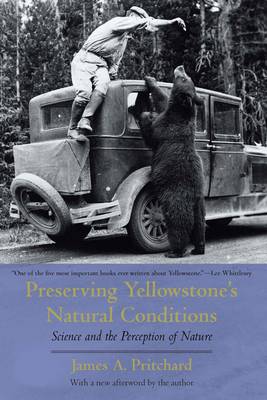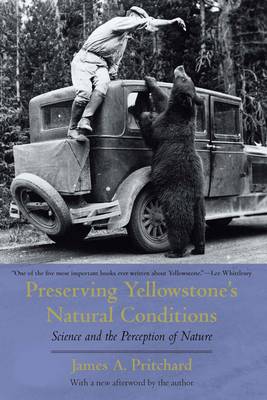
- Afhalen na 1 uur in een winkel met voorraad
- Gratis thuislevering in België vanaf € 30
- Ruim aanbod met 7 miljoen producten
- Afhalen na 1 uur in een winkel met voorraad
- Gratis thuislevering in België vanaf € 30
- Ruim aanbod met 7 miljoen producten
Zoeken
Preserving Yellowstone's Natural Conditions
Science and the Perception of Nature
James a Pritchard
Paperback | Engels
€ 36,45
+ 72 punten
Omschrijving
Preserving Yellowstone's Natural Conditions describes in fascinating detail the historical origins and development of wildlife management in Yellowstone National Park, alongside shifting understandings of nature in science and culture. James A. Pritchard traces the idea of "natural conditions" through time, from the introduction of this concept by early ecologists in the 1930s. He tells several overlooked stories of Yellowstone wildlife, including a sensational scientific hunt for bears with bow and arrow, and the episode of the predator pelicans, which facilitated a fundamental shift toward protection of all wildlife in Yellowstone, and for the National Park Service as a whole. A prolonged debate regarding the elk herd on Yellowstone's northern range is addressed, along with the origins of the notion of natural regulation, and the reasons for ending direct reductions of elk. This story emphasizes how ecological science came to Yellowstone and to the National Park Service, subsequently developing over a period of decades. In the new afterword to this book Pritchard summarizes recent developments in wildlife science and management--such as the "ecology of fear" and trophic cascades--and discusses historical continuities in the role of the park as a wildlife refuge and the inestimable values of the park for wildlife conservation.
Specificaties
Betrokkenen
- Auteur(s):
- Uitgeverij:
Inhoud
- Aantal bladzijden:
- 434
- Taal:
- Engels
Eigenschappen
- Productcode (EAN):
- 9781496233059
- Verschijningsdatum:
- 1/10/2022
- Uitvoering:
- Paperback
- Formaat:
- Trade paperback (VS)
- Afmetingen:
- 150 mm x 224 mm
- Gewicht:
- 566 g

Alleen bij Standaard Boekhandel
+ 72 punten op je klantenkaart van Standaard Boekhandel
Beoordelingen
We publiceren alleen reviews die voldoen aan de voorwaarden voor reviews. Bekijk onze voorwaarden voor reviews.











